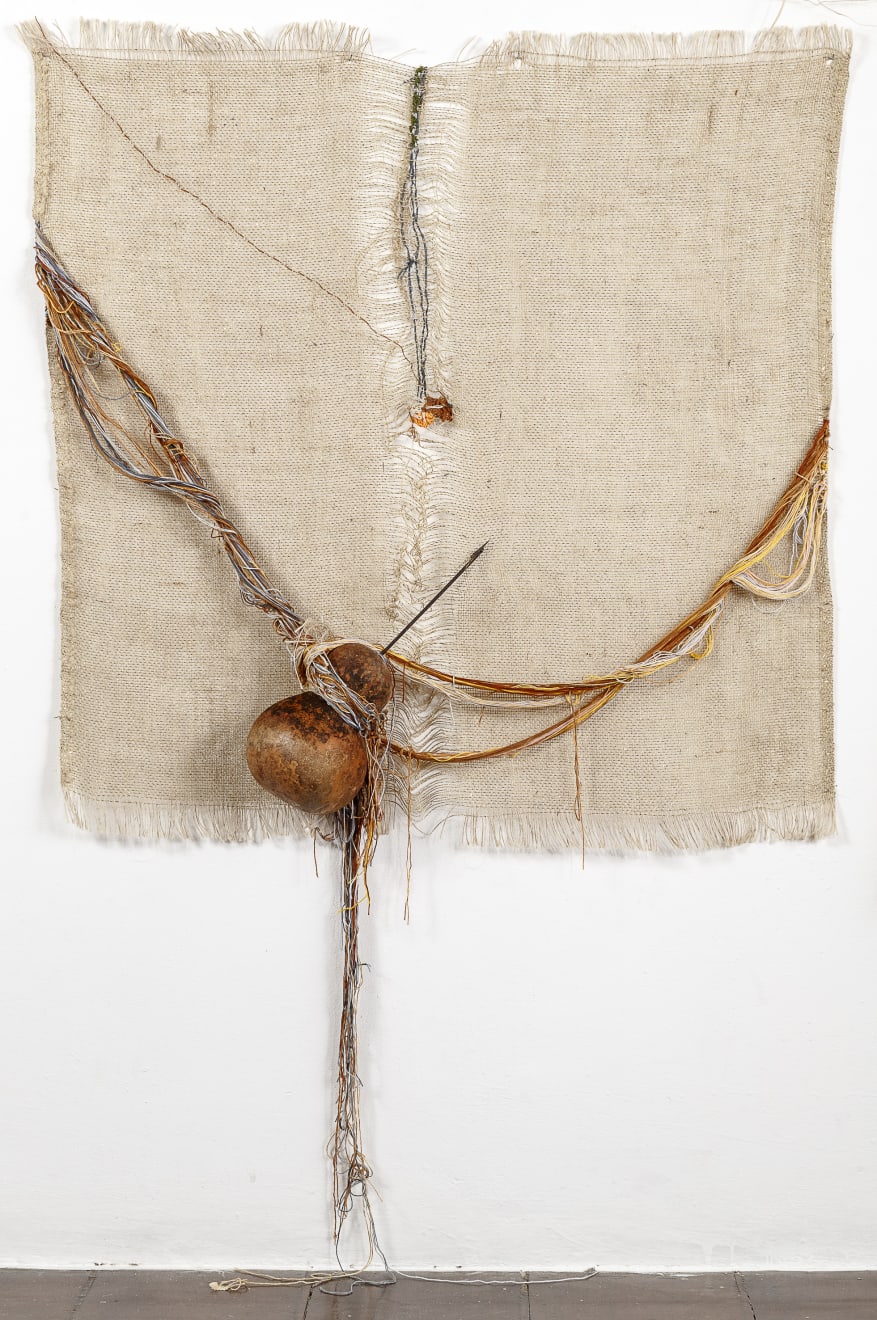ABRE ALAS #16
Reitchl Komch, Trilhas para o Iroko (1), 2019
juta, meada, cabaça, ferro [jute, skein, gourd, iron]
170 x 96 x 15 cm [66 7/8 x 37 3/4 x 5 7/8 in]
Na tradição mitológica africana, o orixá Iroko é o tempo. Misterioso e libertário, agente do destino e dos desvios, ele se transfigura em um das quatro árvores sagradas para os...
Na tradição mitológica africana, o orixá Iroko é o tempo. Misterioso e libertário, agente do destino e dos desvios, ele se transfigura em um das quatro árvores sagradas para os povos iorubás: a milicia excelsa (correspondente no Brasil à gameleira). Mais visão do que revisionismo, antes longevidade e impermanência do que atemporalidade ou dogmatismo, suas pintura e esculturas cogitam desde emblemáticas narrativas da diáspora negra à paradoxais atualizações emocionais por resgate das origens.
In the African mythological tradition, the Iroko orisha represents time. Mysterious and libertarian, an agent of destiny and deviations, he transforms himself into one of the four sacred trees for the Yoruba peoples: the milicia excelsa (correspondent in Brazil to the gameleira). More vision than revisionism, rather longevity and impermanence than timelessness or dogmatism, her paintings and sculptures contemplate from emblematic narratives of the black diaspora to paradoxical emotional updates and a recuperation of origins.
In the African mythological tradition, the Iroko orisha represents time. Mysterious and libertarian, an agent of destiny and deviations, he transforms himself into one of the four sacred trees for the Yoruba peoples: the milicia excelsa (correspondent in Brazil to the gameleira). More vision than revisionism, rather longevity and impermanence than timelessness or dogmatism, her paintings and sculptures contemplate from emblematic narratives of the black diaspora to paradoxical emotional updates and a recuperation of origins.
